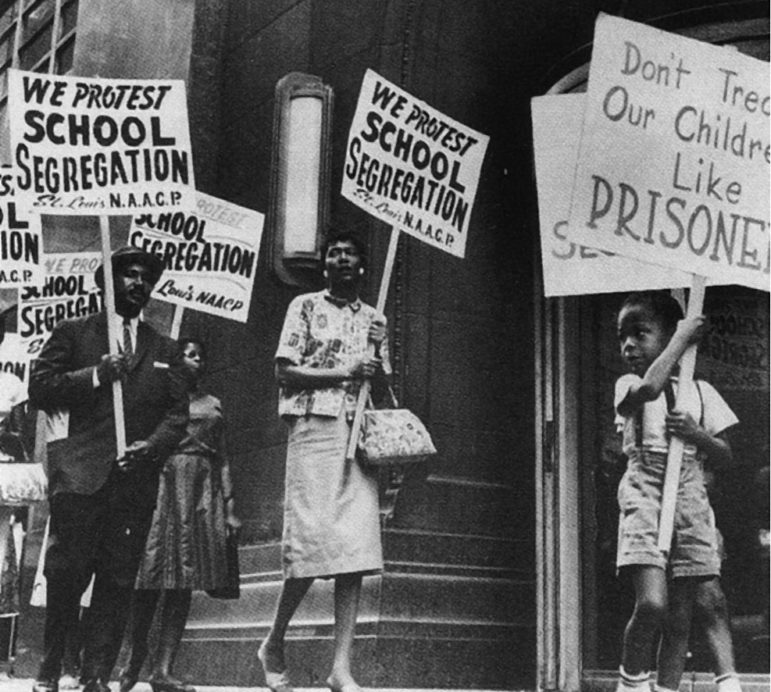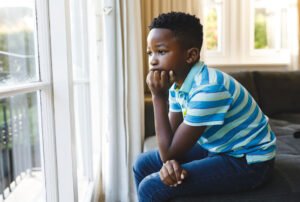
We are struck by the timing of this newswire, coming as enrollment at Historically Black Colleges and Universities (HBCUs) is surging.
In 1954, the Supreme Court struck down the legal framework supporting the nation’s racially segregated public education system. The Court affirmed “separate educational facilities are inherently unequal,” recognizing that keeping children in racial silos could never lead to equality and that the damage segregation causes would stay with them throughout their lifetimes.
Sixty years later, there’s scant evidence that we have made real progress in eliminating segregation from public education. According to a UCLA Civil Rights Project study, “school segregation remains very high for black students. It is also double segregation by both race and poverty. Nationwide, the typical black student is now in a school where almost two out of every three classmates (64 percent) are low income, nearly double the level in schools of the typical white or Asian student.” A just-released report by the Century Foundation tells us that New York City’s Universal Pre-K program was unable to create an integrated reality.
While overall pre-K enrollment is racially diverse, however, individual pre-K classrooms are more homogeneous. In half of all pre-K classrooms, more than 70 percent of children come from a single racial or ethnic group.
Few doubt that the harm recognized by the Warren Court is real. Segregation punishes minority and low-income children for their lifetimes. A 2006 study by the National Bureau of Economics Research found “robust evidence that the black-white test score gap is higher in more segregated cities. Holding constant family background and other factors, a shift from a fully segregated to a completely integrated city closes about one-quarter of the raw black-white gap in SAT scores.” A more recent study using test scores from 2009–2013 by a Stanford University research team showed a similar pattern. One of the study’s principals, Sean Reardon, saw the data as confirming “racial segregation seems to lead to an unequal distribution of resources that is disproportionately harming poor children of color.”
As a nation and a society, we still desire a school system that provides equal opportunity for all children, but we seem confused about whether we can actually build one. The failure to make substantial progress has led some educational policymakers to conclude that integrated schools cannot be created by law or policy directive, that educational equality can only be achieved when parents choose integrated options for their children. As Secretary of Education John King, Jr. recently told Atlantic reporter Alia Wong:
Sign up for our free newsletters
Subscribe to NPQ's newsletters to have our top stories delivered directly to your inbox.
By signing up, you agree to our privacy policy and terms of use, and to receive messages from NPQ and our partners.
“Instead of worrying about diversity, we should be embracing our diversity. We also have to acknowledge as we look at some of the tensions around the country around issues of race and class…[that we need to] create school communities that are genuinely diverse.”
But he has concluded that because of “the racial confrontations tactics such as mandated busing or campus reassignment could cause he doesn’t want to force anyone to attend a school they don’t want to attend. He wants integration to happen on its own—almost as if it were an organic process.”
Rather than support integration as a requirement of public education and push children into an integrated reality, government administrators seek to entice parents into choosing an integrated experience for their children. The policies they propose create “magnet programs, dual-language schools, or district-wide choice, [all] strategies that can help draw middle-class white kids into high-poverty neighborhoods.” They’re counting on the fact that a parent’s desire to give children the best possible education will overcome bias and fear to accomplish what more coercive strategies cannot.
For Secretary King, trusting parents to do the right thing is the only way forward.
It’s very important that schools convey that: “We’re going to be a place that celebrates diversity, that creates equitable opportunities within our building.” It’s thinking more holistically about how we ensure every child is having a positive learning experience.
Critics of this approach see this as wishful thinking rather than wise policy. For them, it’s just a way to avoid the painful medicine needed to cure a serious societal ill. Quoting Natalie Hopkinson, a black parent and journalist, “White people will not enroll their children in schools unless they’re already [predominantly] white…White parents tend to send their kids to schools that they perceive as ‘high status.’ So the segregation keeps repeating itself as long as you rely on choice as a way to make the change.”
Continuing to search for strategies to make integration comfortable for white families may make political sense. But taking that path means more children of color by default will have to experience the real harm caused by de facto segregated and unequal schools while waiting endlessly for change.—Martin Levine













